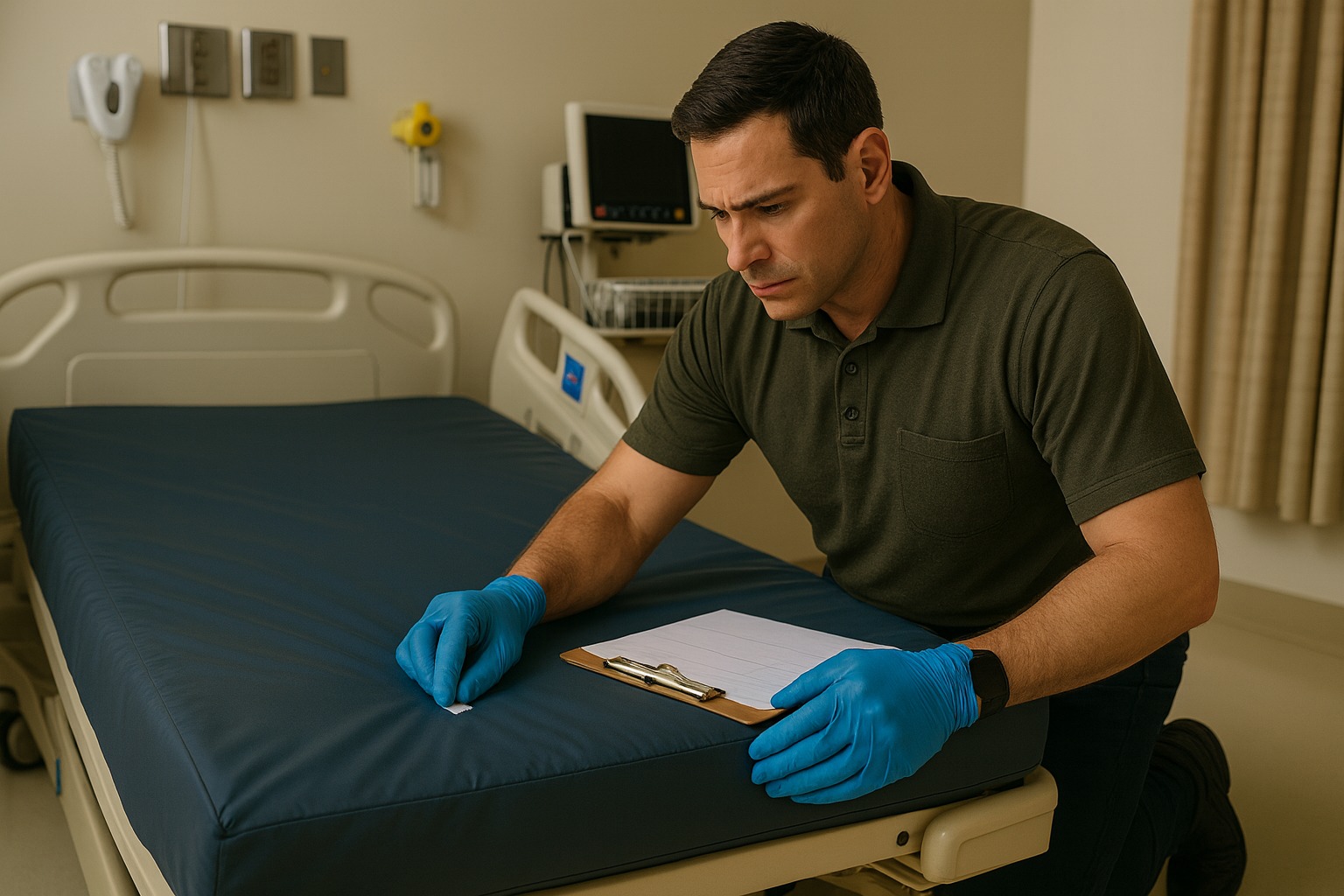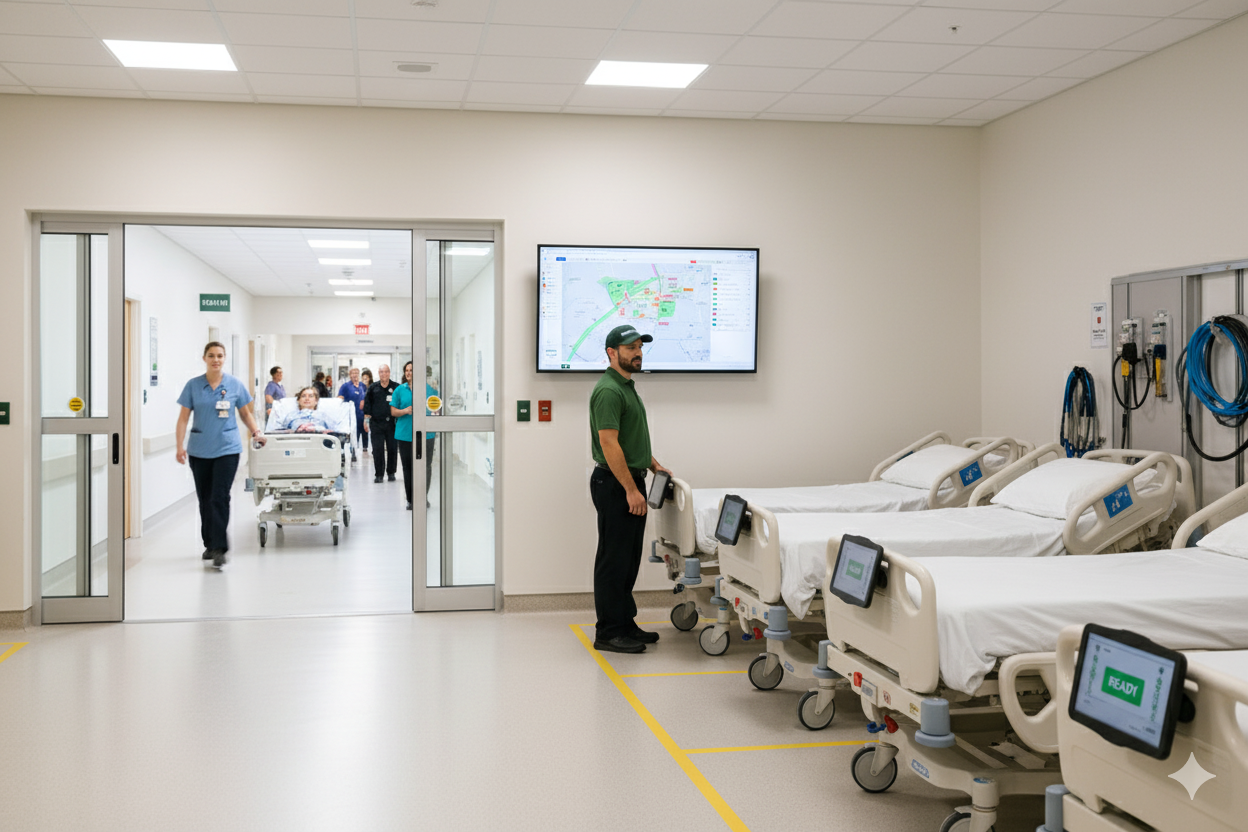
In hospitals, ensuring patient safety is paramount, with fall prevention being a critical aspect of care. Patient falls not only compromise safety but also have significant financial implications for healthcare institutions, especially in light of reimbursements tied to quality metrics by the Centers for Medicare & Medicaid Services (CMS). One often overlooked yet essential factor in preventing patient falls is the maintenance of hospital beds. Proper bed maintenance is crucial, as it directly impacts patient safety by addressing potential fall risks associated with bed use.
The Role of Bed Exit Alarms in Fall Prevention
One of the innovative strategies employed in modern hospital beds to prevent falls is the use of bed exit alarms. These alarms alert healthcare staff when a patient attempts to leave their bed unassisted, allowing for timely intervention. Bed exit alarms have proven to be an effective tool in reducing patient falls, acting as an early warning system that enables caregivers to provide the necessary assistance, thereby ensuring patient safety.
The Importance of Side Rails
Patients often rely heavily on side rails when getting in and out of bed. These rails provide support and stability, reducing the risk of falls. However, if side rails are not functioning correctly or are broken, they can become a significant fall hazard. Proper maintenance ensures that side rails are secure, stable, and reliable, thereby minimizing the risk of falls associated with their use.
Mattress Fit and Patient Safety
A mattress that does not fit the bed frame properly can create gaps or uneven surfaces, which pose a fall risk to patients. Ensuring that mattresses fit securely within the bed frame is an essential aspect of bed maintenance. A well-fitted mattress not only provides comfort but also enhances safety by eliminating gaps that could lead to patient falls.
Calibration of Bed Motors
The ability of a bed to reach its lowest position is crucial for patient safety, especially when patients are getting in or out of bed. Proper calibration of bed motors ensures that beds can be lowered to an appropriate height, reducing the risk of falls. Regular maintenance checks must include an assessment of the bed’s motor and calibration to ensure that it functions as intended.
Brakes and Brake Indicators
The functionality of bed brakes and brake indicators is vital for preventing the bed from moving unexpectedly. If brakes or brake indicators are not working correctly, the bed can move while a patient is trying to get in or out, significantly increasing the risk of falls. Maintenance protocols should include regular checks of these components to ensure that they are in good working order, providing a stable and secure environment for patient mobility.
CMS Reimbursements and the Financial Implications of Patient Falls
Patient falls are tied to financial implications for hospitals due to the CMS reimbursement model, which factors in hospital-acquired conditions, including falls, in its payment calculations. Hospitals with higher rates of patient falls may face financial penalties, making fall prevention not only a matter of patient safety but also of financial prudence. Effective bed maintenance plays a crucial role in minimizing falls, thereby supporting hospitals in maintaining favorable reimbursement rates from CMS.
Conclusion
Effective hospital bed maintenance is a cornerstone of patient safety initiatives aimed at minimizing falls. By ensuring the proper functioning of bed exit alarms, side rails, mattress fit, bed motors, and brakes, healthcare facilities can significantly reduce the risk of patient falls. These measures not only safeguard patient well-being but also have positive financial implications for hospitals by aligning with CMS reimbursement criteria. In prioritizing comprehensive bed maintenance, healthcare providers demonstrate a commitment to the highest standards of patient care and safety.
Through diligent attention to the details of bed maintenance, hospitals can create a safer environment for patients, reducing the incidence of falls and enhancing the overall quality of care. This proactive approach to patient safety underscores the importance of regular maintenance routines and highlights the integral role of well-maintained hospital beds in fall prevention strategies.
About the Author
Sheneka Rains, a seasoned contributor to discussions on hospital bed repairs and management, offers insights based on Emeritus’ expertise. As a Dallas, Texas-based leader in healthcare technology management and IT services, Emeritus provides valuable information to a global audience, underscoring the critical role of strategic bed management in enhancing patient safety and healthcare outcomes.










